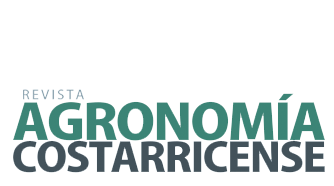Research and use of biochar in Costa Rica
DOI:
https://doi.org/10.15517/sh3x5e25Keywords:
biochar kilns, oil palm stubble, agricultural production, sustainability, soil amendment, agricultural waste managementAbstract
Introduction. Universities, private companies, non-governmental organizations, and producers’ organizations have conducted research on biochar in Costa Rica in the last 15 years. Objective. To compile observed results in technical documents (bulletins, reports) and scientific documents (scientific papers and theses) related to the use of biochar in Costa Rica. Content. Different furnace designs are presented, with a predominant of the small-scale tin furnace and temperatures between 400 and 600 °C. The raw materials used to produce biochar are wood residues (Gmelina arborea, Cordia alliodora), firewood from coffee and banana agroforestry systems, bamboo, sugarcane stubble, and oil palm stalk. Methodologies have been developed to characterize biochar such as elemental analysis, proximate analysis, and nutrient content. Conclusions. Positive results have been observed in crop development, in acidic soils (doses between 10 and 20 t ha-1) cropped with oil palm and vegetables. No significant increases in crop development were seen with the application of biochar in soils with high cation content (Inceptisols) and volcanic ash derived soils (Andisols) in cocoa, oil palm, and vegetables. Significant improvements in water retention were seen at doses of 30 t ha-1 in sandy soils and a significant decrease in the incidence of Radophulus similis and Fusarium oxysporum in banana was observed, with the addition of biochar + endophytic microorganisms. Biochar production from agricultural byproducts and its use in crops and areas near the production site is recommended to promote the bioeconomy. Future lines of research should include: the improvement of ovens design to work with resistant materials such as oil palm fiber, evaluation of the biochar impact on water, nutrients, and pesticides retention, as well as crop productivity in acid and sandy soils.
Downloads
Downloads
Published
Issue
Section
License
Copyright (c) 2025 Agronomía Costarricense

This work is licensed under a Creative Commons Attribution-NonCommercial-NoDerivatives 4.0 International License.
The author (s) must authorize Revista Agronomia Costarricense Journal the right of its publication which will be registered with the Creative Commons Attribution-NonCommercial-NoDerivs 4.0 license. Author (s) may include their publication in an institutional repository clarifying that the publication was done in the Agronomía Costarricense Journal.
Once the volume of the respective period has been published, the digital version can be accessed, which allows managing a self-archive of the document or documents of interest, in the site selected by the author.
Otherwise, the main author must attest in writing, that the presented information is original and unpublished by any other media. Also, must have the authorization of the institution where the investigation was conducted.




